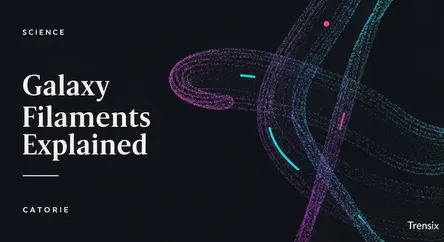Science
Galaxy Filaments Explained

Explore galaxy filaments, the largest structures in the universe, which form a vast cosmic web connecting galaxies and shaping cosmic evolution.
What is it?
Galaxy filaments are the largest known structures in the universe. They are massive, thread-like formations composed of galaxies, gas, and vast amounts of dark matter. These filaments connect galaxy clusters and superclusters, forming an immense network often referred to as the 'cosmic web.' Stretching for hundreds of millions of light-years, they act as the scaffolding of the cosmos, outlining the boundaries of enormous cosmic voids. Galaxies are not randomly distributed in space; instead, they are arranged along these filaments, drawn together by gravity over billions of years, tracing the underlying distribution of dark matter.
Why is it trending?
Advances in observational astronomy, particularly from powerful telescopes like the James Webb Space Telescope and large-scale sky surveys, have brought galaxy filaments into focus. Scientists can now map these structures with unprecedented detail and even detect the faint intergalactic gas that flows along them. Recent studies are revealing how these cosmic highways channel material into galaxies, fueling star formation and galaxy growth. This new data allows astronomers to test and refine cosmological models about the universe's formation and the mysterious nature of dark matter.
How does it affect people?
While seemingly remote, understanding galaxy filaments fundamentally changes our perception of the universe and our place within it. This research addresses core questions about cosmic origins: How did galaxies like our Milky Way form and evolve? What is the role of dark matter and dark energy in shaping the cosmos? By mapping this cosmic web, we gain crucial insights into the fundamental laws of physics that govern everything. It expands humanity's knowledge, drives technological innovation in telescopes and data analysis, and inspires a deeper appreciation for the intricate and vast structure of our universe.